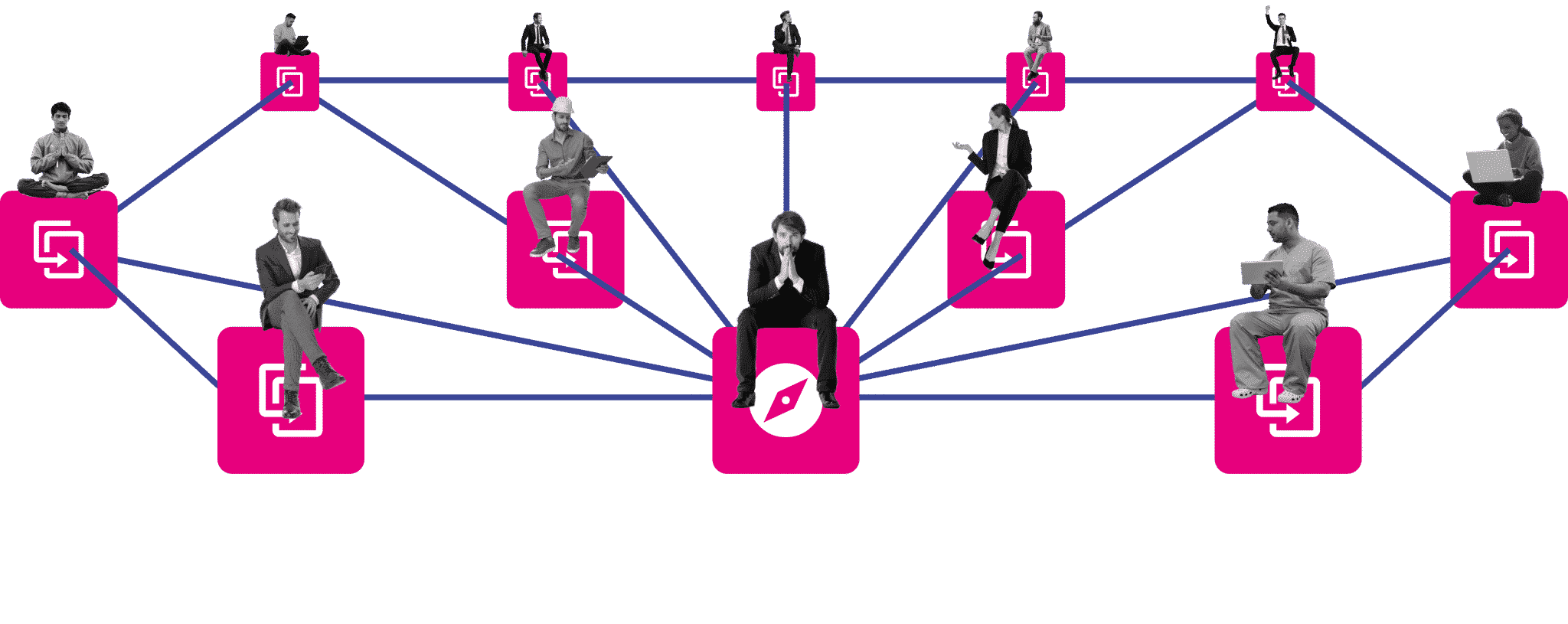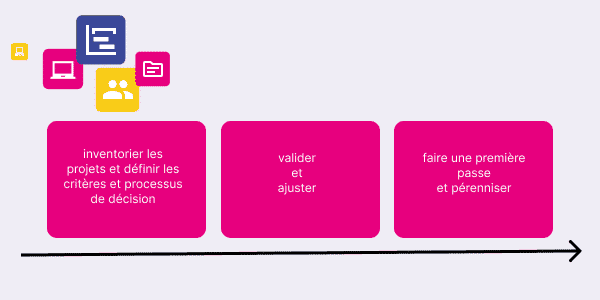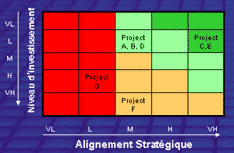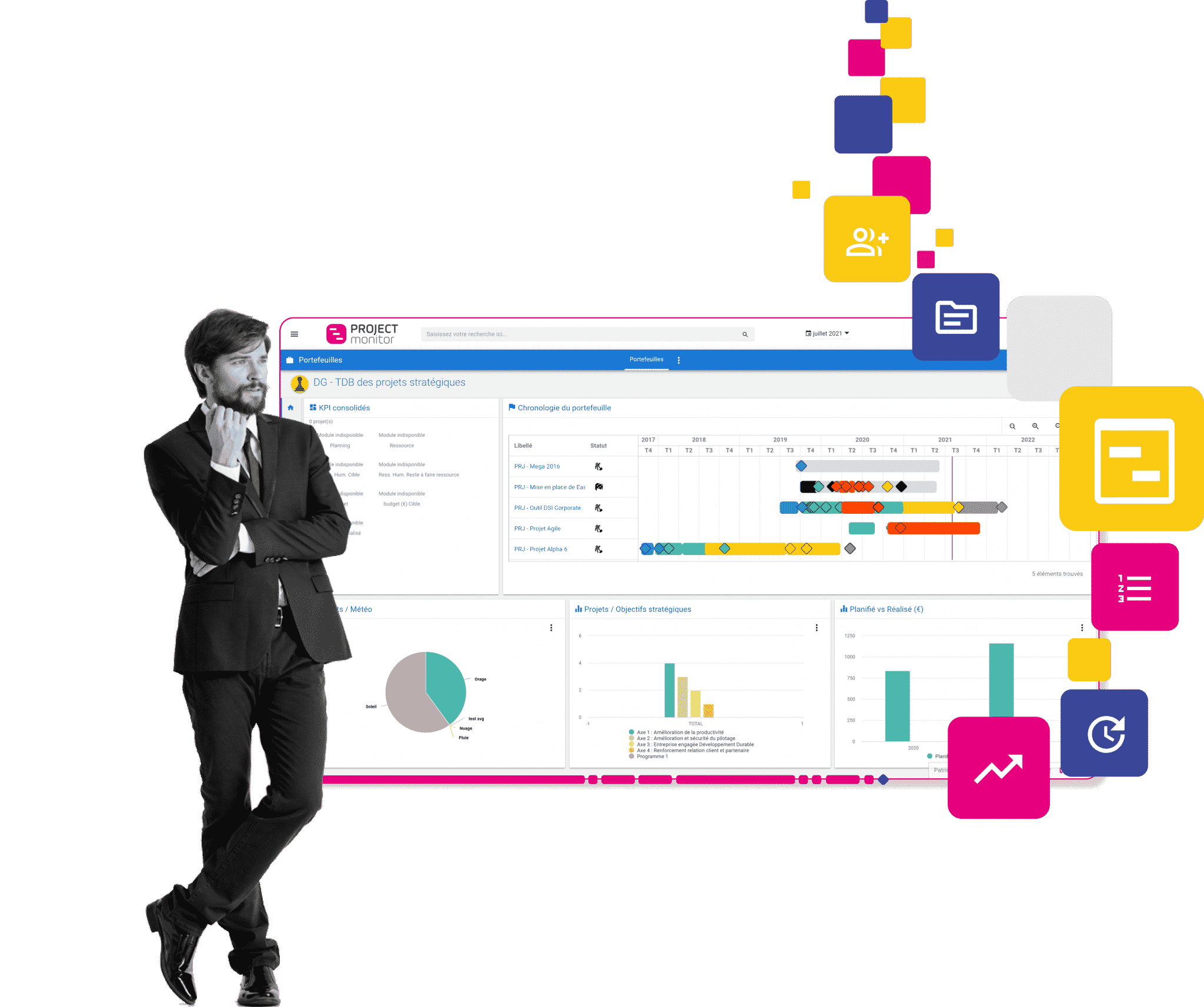Example of the implementation of a project portfolio for a CIO | Interview with the PMO
Discover in this interview the testimonial of Michel Operto, PMO & PPM expert. Michel had the opportunity to prioritize and manage a portfolio of IT projects. If you're a PMO, Project Manager or CIO, this content will be useful if you're embarking on a similar adventure! Here are the highlights of this experience in setting up an CIO project portfolio.
On the program in this article:
- What were the objectives in setting up the project portfolio?
- Some useful definitions: Project, program, portfolio
- Roles and responsibilities of the main players in this experiment
- Milestones
- Things to remember for your own project portfolio
- Setting up a project portfolio tool

Project portfolio management: definitions of project, program and portfolio.
- Project :
- Project New: A project undertaken to create a new product or service. Or to automate a manual process. Or to create a new customer journey (digitization).
- Baseline project: Series of development and maintenance tasks required to keep an existing application running smoothly. Evolution of technical bricks, for example.
- Program: A group of linked projects managed in a coordinated way and sharing a common business objective.
- Portfolio: All projects and programs undertaken by the IT division.
What were the objectives in setting up the project portfolio?
"I had the opportunity (the luck and privilege, I might add) to set up the prioritization and management of a portfolio of IT projects. I'd like to go back over the highlights of this experience, as I think they may be useful to you if you're embarking on a somewhat similar adventure.
We had 4 main objectives when we created and implemented the IT Project Portfolio Management process. Here they are, along with some of the specific issues each raised.
Maximize project return on investment
- How can you compare projects of different sizes?
- How can we give weight to the different decision keys?
Aligning projects with corporate strategy
- Avoiding partisan quarrels
- Involving the customer in decision-making
- Ensure transparency and traceability of decisions
Limiting the number of projects
- According to what criteria and with what objective in mind?
- How do you quickly identify and kill losers?
Ensure project portfolio consistency
- IT architecture
- Good spread of investments over time
- Good distribution of investments across the various components of the value chain
- Taking account of dependencies between projects
Roles and responsibilities of the main players in this experiment
- Customers > Express your needs and priorities
- Project Teams > Analysis, realization
- Portfolio management > Prepare, challenge, manage
- Project committees > Establish criteria, prioritize
- Investment Review Committee > Deciding
Here, I'd like to focus on the role of portfolio management, which provides data for decision-makers. In my case: the CEO, the IT, Marketing & Sales and Operational Support departments. The portfolio manager doesn't make the decisions, but acts as a facilitator. In fact, he or she facilitates decision-making, thanks to the information provided.
Key stages in setting up a project portfolio
Laying a good foundation
To begin with, and as a basis for our work, we need to take stock of what already exists:
- Projects and programs launched and in progress
- Existing budgets (allocated and available)
- Existing resources (human, material, etc.)
- IT strategic plan (where available)
- Establishing the project repository
Then establish project evaluation criteria
This point is particularly crucial. Given that we want above all to move from a subjective model to a decision model, based on facts and on relevant, non-questionable information.

Thus, from this personal experience, I have learned that the criteria must imperatively be :
- Simple: Easy to understand and calculate. Often, the simplest to understand will not be the easiest to obtain. This doesn't mean you shouldn't choose them, but it does mean you'll have to work hard to get them and keep them up to date.
- Factual: Based on elements that are measurable, indisputable, known and/or visible to all.
- Unique: We also need to avoid multiplying the number of metrics, and therefore strive to reuse those that are already in place.
- Indicators: These metrics are there to give quality elements to decision-makers so that they can make an informed decision, based on facts, and which they will combine with their understanding of challenges both business and technical.
- Systematically calculated and prior to any project review
By way of example, in this particular case, here are the criteria that were used:
- Total investment: Machines, Software, Support costs, External services (consultants), Resources (internal and subcontractors), Travel.
- Strategic Alignment: Impact on Revenue, Impact on Costs, Operational Efficiency, Customer Satisfaction.
- Payback Period = The time needed to fully recover the investment thanks to the benefits generated by the project.
- Probability of success: Well-defined, stable needs; Ability to absorb change and need for reengineering, process redefinition; Project size; Risk of budget or deadline slippage; Security risks.
- Technical alignment: Alignment with technical architecture; No conflicts with convergence plans; Simplicity and modularity; Dependence on other projects; Availability of adequate resources; Availability and stability of technology.
Design cross-priority grids
We then devised simple priority grids that allow the criteria to be crossed *two by two.
In this particular example, the overall investment budget was fixed.
We therefore cross-referenced all the other criteria with this one to position each project in the grids.

Taking a step back to assess the portfolio's balance
Don't be fooled by color codes. Be aware that a portfolio in which all projects are in the green quadrant is not necessarily optimal. Indeed, with the parameters of this portfolio, the green quadrant only favored projects with very short-term returns and the least risk. In business, this strategy rarely pays off in the medium or long term.
Try to find 3-dimensional visualization models
Another useful chart is the cross-tabulation of risks and rewards against the level of investment required.
This graph positions projects in relation to each other according to their benefits and chances of success, while visually showing (thanks to the size of the bubbles) the investments required to undertake them.

What can you learn from this experience for your own project portfolio?
Of course, it takes effort on the part of the portfolio manager and management to initiate the movement, collect all the data, and create the right level of attention among the company's executive management. They will provide the impetus for your project portfolio initiative.
The Portfolio Manager will also have to roll up his sleeves to :
- Immerse yourself in each project file
- Use your personal network within the company to sell the concept and approach to the company's top decision-makers and naysayers.
- Relentless communication
The risks you are likely to face
- Frequent reorganizations may force you to re-explain and re-sell principles, and possibly adjust them. Target the company's objectives so that the project portfolio's ambitions meet them. This will encourage the management committee to buy in.
- Estimate future costs. In fact, financial pressure during the year may limit your results by encouraging some partners to return to the old way of doing things.
- Anticipate resistance to change in the first rounds of prioritization. To do this, take business needs into account, so as to introduce them to the project from the outset.
The benefits of implementing a project portfolio
- A strategic view of the portfolio. All members of the business departments sit down with you around the same table. To discuss the project portfolio as a whole.
- Transparency on all projects. What's more, good group work to establish the criteria will create cohesion and trust.
- Aligning the project portfolio management process with the company's investment review process.
- Better arbitrate and prioritize projects. You' ll be able to quickly identify projects that need to be eliminated or postponed if they don't meet your criteria. This will allow you to concentrate your resources on the most promising ones.
What about the tool? Implement a project portfolio management software
How do you find the right collaborative tool to manage a large portfolio of projects?
To do this, take stock of the challenges encountered in your company, whether in terms of managing project requests, risks, budgets, or resource management. The ppm tool is a response to business needs, and must facilitate decision-making at project governance level".
How did they improve their project management? CIO , PMO, Project Managers share their experiences with you!
Take control of your project portfolio with Project Monitor
Project Monitor is a project portfolio management software. Suitable for structures with more than 50 employees and managing more than 100 active projects.
Simplify your project management with an all-in-one tool: multi-project dashboards, workload plan, schedule, tasks, IT request tracking, budget tracking.

This article was co-written with Michel Operto, an expert in project management, PMO and IT portfolio prioritization. Michel Operto is also editor of the project and portfolio management blog https://dantotsupm.com/
Other frequently asked questions about project portfolio management methods
How do you build up a project portfolio?
Building a project portfolio involves several key steps. Identify potential projects in line with your organization's strategic objectives. Assess their relevance, feasibility and alignment with the overall vision. In this article, you'll find tips for building your project portfolio.
What are the project portfolio performance indicators?
These indicators may vary according to the organization's specific objectives and priorities, but some commonly used ones include return on investment (ROI), on-time delivery, budget compliance, stakeholder satisfaction, quality of deliverables, resource productivity and risk reduction. See this article for examples ofproject portfolio performance indicators.